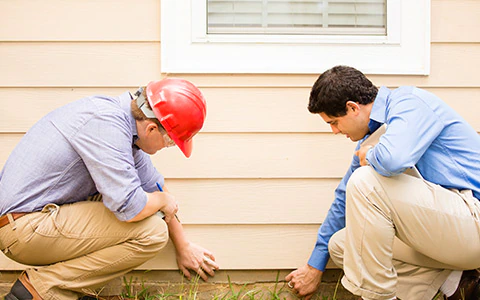If you own a home with multiple occupants, it’s important to understand how this can affect your home insurance policy. Multiple occupants can include renters, roommates, family members, or other individuals who live in the same residence as you. In this article, we will discuss home insurance for homes with multiple occupants and what you need to know to ensure that you are adequately protected.
Why does having multiple occupants affect home insurance?
When you have multiple occupants in your home, the risk of damage, loss, or liability increases. For example, if a renter or roommate causes damage to your property, your insurance policy may need to cover the cost of repairs or replacement. Additionally, if someone is injured on your property, your insurance policy may need to cover the cost of medical expenses, legal fees, or other damages.
Because of these increased risks, home insurance policies may have different requirements or limitations for homes with multiple occupants. It’s important to review your policy carefully to understand what types of coverage are available and what exclusions or limitations may apply.
What types of coverage are available for homes with multiple occupants?
There are several types of coverage available for homes with multiple occupants, including:
Dwelling coverage
Dwelling coverage is the portion of your home insurance policy that covers the physical structure of your home. This includes the walls, roof, foundation, and other structures attached to the main dwelling. If you have multiple occupants in your home, your dwelling coverage may need to be adjusted to account for the increased risk of damage or loss.
Personal property coverage
Personal property coverage is the portion of your home insurance policy that covers your personal belongings, such as furniture, clothing, and electronics. If you have multiple occupants in your home, your personal property coverage may need to be increased to cover the value of their belongings.
Liability coverage
Liability coverage is the portion of your home insurance policy that covers your legal responsibility for injuries or damages to other people or their property. If you have multiple occupants in your home, your liability coverage may need to be increased to account for the increased risk of accidents or injuries.
Additional living expenses coverage
Additional living expenses coverage is the portion of your home insurance policy that covers the cost of temporary living expenses if you are unable to live in your home due to a covered loss. If you have multiple occupants in your home, your additional living expenses coverage may need to be increased to cover the cost of temporary housing for everyone who lives in the home.
What factors affect the cost of home insurance for homes with multiple occupants?
The cost of home insurance for homes with multiple occupants depends on several factors, including:
- The number of occupants in the home
- The age, condition, and value of the home
- The location of the home
- The type and amount of coverage selected
- The level of risk associated with the occupants, such as their age, occupation, and credit history
- The history of claims for the home and occupants
How to ensure you have adequate coverage for homes with multiple occupants?
To ensure that you have adequate coverage for homes with multiple occupants, follow these steps:
Review your home insurance policy
Review your home insurance policy carefully to understand what types of coverage are available and what exclusions or limitations may apply. If you have questions or concerns, contact your insurance agent or company for clarification.
Evaluate your coverage needs
Evaluate your coverage needs based on the number of occupants in your home and their belongings. Consider increasing your coverage limits or adding additional coverage if necessary.
Communicate with your occupants
Communicate with your occupants about the importance of insurance and encourage them to purchase their own renters or homeowners insurance policy. This can help to reduce your liability and ensure that everyone is adequately protected.
In conclusion, having multiple occupants in your home can increase your risk of damage, loss, or liability, which can affect your home insurance policy. It’s important to review your policy carefully to understand what types of coverage are available and what exclusions or limitations may apply. Consider increasing your coverage limits or adding additional coverage to ensure that you are adequately protected.
Communication is also key when it comes to home insurance for homes with multiple occupants. Encourage your occupants to purchase their own renters or homeowners insurance policy to reduce your liability and ensure that everyone is adequately protected. By following these steps, you can ensure that your home and all of its occupants are properly protected with the right coverage.




